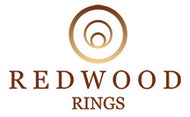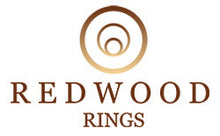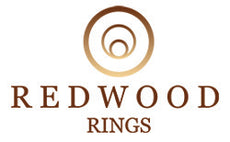Who Buys the Wedding Bands?

Love is in the air, and wedding bells are ringing! As you start to plan your big day, one question pops up with a sparkle – who buys the wedding bands? It all began in ancient Egypt, where they first embraced the tradition of wedding bands. They saw these rings not just as jewelry but as powerful symbols of eternal love and commitment.
Intricately fashioned in the form of a circle, a shape with no beginning or end, these bands represented the infinite nature of love. This remarkable concept, rooted in one of the world's oldest civilizations, set the stage for a tradition that would transcend time and cultures.
Traditional Roles in Different Cultures
In different cultures, the tradition of who buys the wedding bands varies. In Western cultures, like North America and Western Europe, the groom traditionally purchases the bands, an extension of the custom of proposing with an engagement ring. Eastern European traditions often see a shared cost between the couple, symbolizing partnership and equality. In Asian countries, where the West influences the concept of wedding bands, other forms of jewelry play a significant role, often purchased by families. In Latin America, the tradition may include unique practices like exchanging "arras" or coins. In Jewish traditions, the groom typically gives the bride a ring as a central act in the wedding ceremony.

The Modern Twist
Today's couples are redefining traditional norms when purchasing wedding bands. With the rise of gender equality and the blending of cultural practices, deciding who buys the wedding bands is becoming a matter of personal choice rather than following a set tradition. Many couples now opt to select and purchase their bands together , reflecting a joint decision-making process in their relationship. There's also a growing trend towards customization and personalization, with couples seeking unique designs that reflect their personalities and stories. This modern approach embraces a mix of traditional values with contemporary perspectives, creating new traditions as diverse as the couples.
Did you know?
Approximately 7% of wedding rings are bought for other special occasions like anniversaries or Valentine's Day.
The Economics of Buying Wedding Bands
The cost of wedding bands can vary significantly depending on factors like material, design, and whether they include gemstones. On average, couples in the United States spend between $1,000 to $5,000 on wedding bands, though this range can be higher or lower based on personal preferences and financial circumstances. To navigate this financial aspect, it's crucial for couples to set a budget early in the planning process.
This budget should account for not only the cost of the rings themselves but also any additional expenses such as engravings or custom designs. Shopping around, comparing prices, and considering alternative materials like titanium or palladium can provide more budget-friendly options. Moreover, couples should also think about the long-term value and durability of the rings, as these are items meant to last a lifetime.

Discussion on Shared Expenses vs. Individual Purchases
The decision on whether to share the expense of wedding bands or make individual purchases is increasingly becoming a reflection of each couple's financial dynamics and values. Traditionally, it was common for one partner (usually the groom) to bear the cost of both rings. However, splitting the cost of wedding bands is becoming more common in modern relationships, especially where both partners contribute equally to shared finances.
This shared approach not only eases the financial burden on one individual but also symbolizes a joint commitment to their life together. On the other hand, individual purchases might be preferred when one partner wants to surprise the other with a special or custom design or when couples have different views on the type and cost of the rings they prefer. In any case, open and honest communication about finances is key to making a decision that both partners are comfortable with, and that aligns with their overall financial planning as a couple.
Did you know?
Today, about 81% of all diamond jewelry buyers are Millennials and Gen Zers.
Are Men and Women Ring Sizes the Same?
Ring sizes for men and women are determined by the same scale, but typically, men's and women's fingers differ in size and shape, leading to differences in the average ring sizes purchased for each. The scale used to measure ring sizes does not differentiate by gender; it simply measures the circumference of the finger in millimetres and assigns a numerical value. However, men's rings are often found in larger sizes due to generally larger finger dimensions, while women's rings tend to range on the smaller side of the scale. This variance in average size reflects physiological differences rather than a difference in the sizing system itself. Regardless of these tendencies, the most important factor is the fit of the ring on the individual's finger, emphasizing the need for personal sizing to ensure comfort and security for the wearer, regardless of gender.
Who Buys the Wedding Bands?
The tradition of who buys the wedding bands can vary greatly depending on cultural practices, personal preferences, and financial circumstances. In some cultures, it's customary for the bride and groom to purchase each other's rings as a symbol of their mutual commitment. In others, the cost of the wedding bands may be included in the overall wedding budget shared by the couple or their families. Nowadays, many couples choose to shop for the rings together and split the cost, reflecting their partnership and shared responsibility.
Regardless of who pays, the most important aspect is the symbolic meaning of these bands - a circle with no beginning or end, representing the couple's unending love and commitment to each other. Ultimately, the decision should be a personal one that both partners are comfortable with, ensuring that the purchase of the wedding bands is yet another cherished moment in their journey toward marital bliss.






